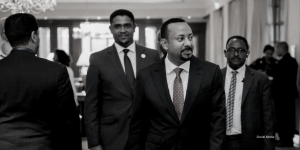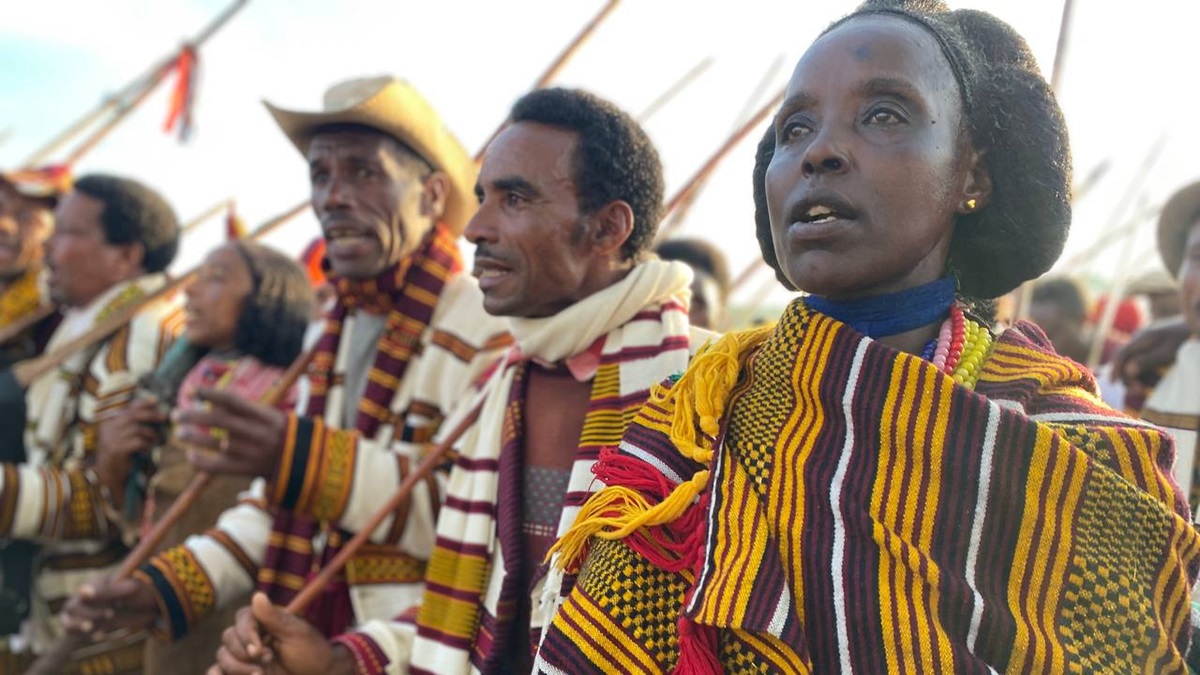Commentary: Understanding EPRDF’s enigmatic situation to save the republic
Zerihun Addisu, for Addis Standard
Addis Abeba, November 21/2018 – It is now a little over six months since the swearing in of Abiy Ahmed as prime minister of Ethiopia, which ignited unprecedented hope and optimism since 2005. Although as chairman of EPRDF, PM Abiy is largely considered as aspiring leader who many believe is relentlessly working to the betterment of the political conundrum in one of the party’s chaotic and turbulent periods, reforming the whole political and economic system takes a great deal of redefining both the role and the way the ruling party operates.
Like Deng’s China Communist Party and Gorbachev’s Soviet Union Communist Party, defining and understanding the role and changes taking place inside the party is very much essential given the style of the organization, the philosophy, administration and culture of aligning the state with the party. Reforms take many forms and levels and historically notable experiences had happened before, with the above notable examples to name a few.
Prior to the 2018 change of leadership, despite no tangible results, there have been efforts by different groups who tried to change the system through fair and free elections, including the highly contested election in 2005. Given these efforts and EPRDF’s ability to curtail the space for any meaningful change, it is doubtful if the change of such magnitude within EPRDF could have taken place without bloodshed than the elevation of a serious reformer to the highest political office within the party. Owing to this the prospect of a reformer becoming the party’s chairman, the very idea that such a thing was possible in principle, had been ruled out in advance by many observers in the months and weeks leading up to PM Abiy’s ascendance to the helm.
Yet, it was the great power concentrated in the hands of EPRDF as a party and its leadership that enabled a new party chairman of reformist disposition to do the things Ethiopia has witnessed against all odds.
Be that as it may, without the massive and tireless protests throughout the country since 2015 fundamental change in the EPRDF leadership would certainly have been delayed and could well have been bloodier, as well as never might have happened with the usual rigid ideological stance of the ruling, particularly the TPLF at the helm of EPRDF. The EPRDF system is one in which power flows from top to bottom in which the highest authority at each level was the party’s principles and ideology. Before the death of the late Prime Minister Meles Zenawi the right to appoint officials and the responsibilities for execution of the party’s programs were turned into his personal prerogatives-powers constrained in the office of the chairman, who stood at the top of the hierarchy of party officials, spread across the country.
That is partly why many Ethiopians are struggling to wrap their heads around the idea that Abiy is capable of throwing the shackles of revolutionary democracy doctrine, the practice of democratic centralism, and party discipline. As Alexander Shtromas succinctly argued referring to this as ‘intra-structural dissent’ in the Soviet case, such people are ‘within system reformers’; however, in the long run with the same outcome of undermining the status quo and the political and social order. These are distinct from the ‘extra-structural dissent’ of the overt oppositionists. The EPRDF was a hegemonic political order until the mounting protests and the ‘intra-structural dissent’, coupled with the generational change especially within the two parties, OPD and ADP, a new political consciousness who appear to be ‘more prepared to accept the risks entailed in political reform’ emerged.
The other important factor is the changing balance of power within the EPRDF and the party structure, which is essentially crucial as an enabling factor. This new blood of emerging leaders with the party has resulted in the pluralization of the EPRDF politics, changing the rules of the game and providing new sources of pressure and influence upon the new leadership.
But is the EPRDF System Reform-able per se?
The idea that EPRDF and its revolutionary democracy can be seriously reformed faces a mountain of skepticism because there is no such thing as reform EPRDF’s revolutionary democracy- to borrow the anecdote from the time when Gorbachev was trying to reform communism claiming there is no such thing as reform communism-‘communism is unreformable’. This evolutionary mode of changing the rules of the game, the existing order and the status quo with more far-reaching consequence without any revolutionary upheaval is politically the soundest and provides stability as it moves things calmly, if it happened.
On the other hand, the most challenging task of the reforming process is that, notwithstanding the unprecedented liberalization of the political space and the openness to political pluralism, it is not yet clear what sort of ideology the ruling elites are aspiring to adapt. PM Abiy is facing the daunting Sisyphean task of replacing the old with the new and this was one of the most serious criticism that Gorbachev encountered in his desire to introduce a social democratic variant of socialism, which was espoused but remained largely theoretical than any significant practical change; after all, the Soviet economy was highly centralized and overwhelmingly state-controlled when he was ousted through coup.
Given his rhetoric, one can reasonably associate PM Abiy with the liberal democratic line but he kept reiterating that his party’s developmental state model is still alive. There is a clear break away from developmental authoritarianism moving towards democratic experiment. Nonetheless, this marriage of the two concepts might be practically difficult and the party has always been, since the late Meles, claiming that unlike the Asians it follows it is pursuing democratic developmental statism.
For much of the late Meles’ era EPRDF survived as a result of his iron fist. His sudden death had left the party marred by bitter divisions and fissures; no longer a monolithically united body which its leaders claimed it to be. The former Prime Minister Hailemariam Desalegn recently stated that the party under his administration was full of rivalry for the position he was holding and conflict within it were common; he is of the view that it effectively facilitated his political demise given his weak constituency and the junior party position his own SEPDM occupies within the EPRDF.
Looking at the current leadership one sees no clear plan to move beyond the mere agenda of reform. It appears that, although the country is ready for democracy, the party does not look ready to cast off the mantle of revolutionary democracy and democratic centralism – or how to navigate it smoothly- for that matter. At least, TPLF looks determined to keep things as they are particularly at the party level. It is not also visibly clear that weather it may wish to do away with the ethnic-oriented membership of each party.
However in the aspiration of the agenda of reform, as opposed to dismantling the system, there is a need to get rid of a set of dogmas that outlived their purposes. As it were there are contradictory demands coming from powerful institutional interests and social forces which have the capacity to, advertently or inadvertently, bring the entire process of reform to an end or entail political stagnation which avails the risk of instability and reversibility.
Like the USSR and China, the ruling party enjoyed unparalleled level of political and economic leverages. The federal structure and the party is set on each other’s symbiotic relations, one feeding the other. Ideally, the republic was supposed to be a set of self-administered constitutional units. However, in practice it is the ruling coalition which is basically decentralized and functions in the regions by decisions from a centrally administered executive committee. With its close to six million members and thousands of cadres, methods familiar with soviet communist style operations, EPRDF leaves nothing unseen and unchecked in the private domain. From the capital Addis Abeba to every remote country-side, its social control served the sole party interest of policing, managing and delivering.
After nearly three decades of such rule, however, EPRDF is now going through one of the most fundamental transformations: from a communist-like highly organized political party, which established itself on mass mobilization and indoctrination of the mass, to a bifurcated party with organizational disarray and lack of coherence, rendering its social control and cadre structure meaningless and irrelevant at the same time. By all measures, EPRDF is at the crossroads between reform for a multi-party democratic order and consolidation of the old structure. The small departure it saw under the leadership of PM Abiy left its founding figures and the old guards in a complete bewilderment and state of surprise, dismay and shock all at the same time.
As in other countries such as China and Soviet Union this kind of reform by the ruling party with a liberal value is always hard to swallow and immensely difficult to embrace by the ideologically blind and structurally bound by loyal membership and leadership whose only interest is the interest of the party itself. For these party elite EPRDF does not need any fundamental reform given its long-held ability and capability to function and execute its priorities. There is also a staunch believe in efficacy and deliverance of the policy and the strategy; it is only about implementation and execution which it diminishes Ethiopians’ quest for fundamental change. To this group, what is happening is an ideological betrayal and dishonesty criminalizing its own doings and undoings by its junior members.
The trouble of disowning loyalty
Disowning its legacies while assuming party leadership, albeit inheriting the wrongs and the misdeeds, is a new way of life party hardliners understand in the new leadership. This disassociation and distancing of the new elite who are pledging to democratize and liberalize by aligning the party with the social forces and power bases bears its own costs. For the old guards it is denigrating, backstabbing and hijacking of the institutions and the structure of the party and the government for an alien and strange political goals and ideals, particularly so when ODP and ADP leadership have used the organizational and incumbency leverage to maximize their own interests. Voices of disgruntled party apparatchik, largely led by TPLF and to a considerable extent, the ranking members from ODP, ADP & SEPDM is reverberating on more occasions than few. TPLF and its affiliate media outlets are debunking the new narrative and even at times calling for overthrowing of PM Abiy. However it is worth noting that such voices have been on the shelf even during the time of Hailemariam, if not as forceful as they are now.
This accusations are a reminder of Mao’s moves during the Cultural Revolution attacking “those in authority pursuing the capitalist road”, a label he used against those who thought and acted independently. He tried to ease this ideological tension by mobilizing Red Guards and older rebels to punish those in the position. However, with the coming to power of Deng such gradual change and reform to a capitalist economy was achieved.
Contrary to Gorbachev’s Soviet, Deng’s China had intrinsic advantages it enjoyed. However, whatever those unique advantages, Deng had made choices that were essential and proved to be far more successful in changing China to what the world knows it today. The first and most important difference was that he maintained the authority of the Chinese Communist Party, making it the sole governing structure, whereas Gorbachev tried to abolish the monopoly of the Soviet Communist Party. For Deng it was only the CCP that can provide the core of loyalty, discipline and commitment, which were crucial for China to provide a stable leadership. His belief that China needed to be led by a single ruling party was shared by all three of the other major Chinese leaders in the twentieth century: Sun Yat-sen, Chiang Kai-Shek, and Mao Zedong.
Both the Chinese and the Soviet models of reform are not the right path to today’s Ethiopia. Yet ample lessons could be drawn on how to position the ruling party, approach the social forces, pluralization of politics, resolving the national questions, undertake economic reforms and above all democratization of the Ethiopian state – a project that past Ethiopian state have failed to achieve, and failed spectacularly.
For now, as one Russian writer eloquently put it, the single most important fruit of the change is the people’s ability to close their doors and have a good time free of the knocks, a reference to the securities’ recurrent surprise visits at any point in time and the terror thereof, a scene Ethiopians are too familiar with.
Despite such sense of relief however, Ethiopians are acutely aware that the direction the EPRDF takes from here onward will define the political waves and journey the country takes as it has regrettably glued its ability to survive as a party with the country’s destiny. The biggest challenge awaiting every Ethiopian is therefore knowing the art of divorcing EPRDF’s unholy marriage with the fate of the country and redefining a new destiny for a democratic Ethiopia while keeping it as a country and in one piece. AS
Editor’s Note: Zerihun Addisu studies Public Policy Administration and Law at York University, Toronto, Canada. He has also studied his master’s in international relations in Kyoto, Japan. He can be reached at zerihunaddisu1@gmail.com








